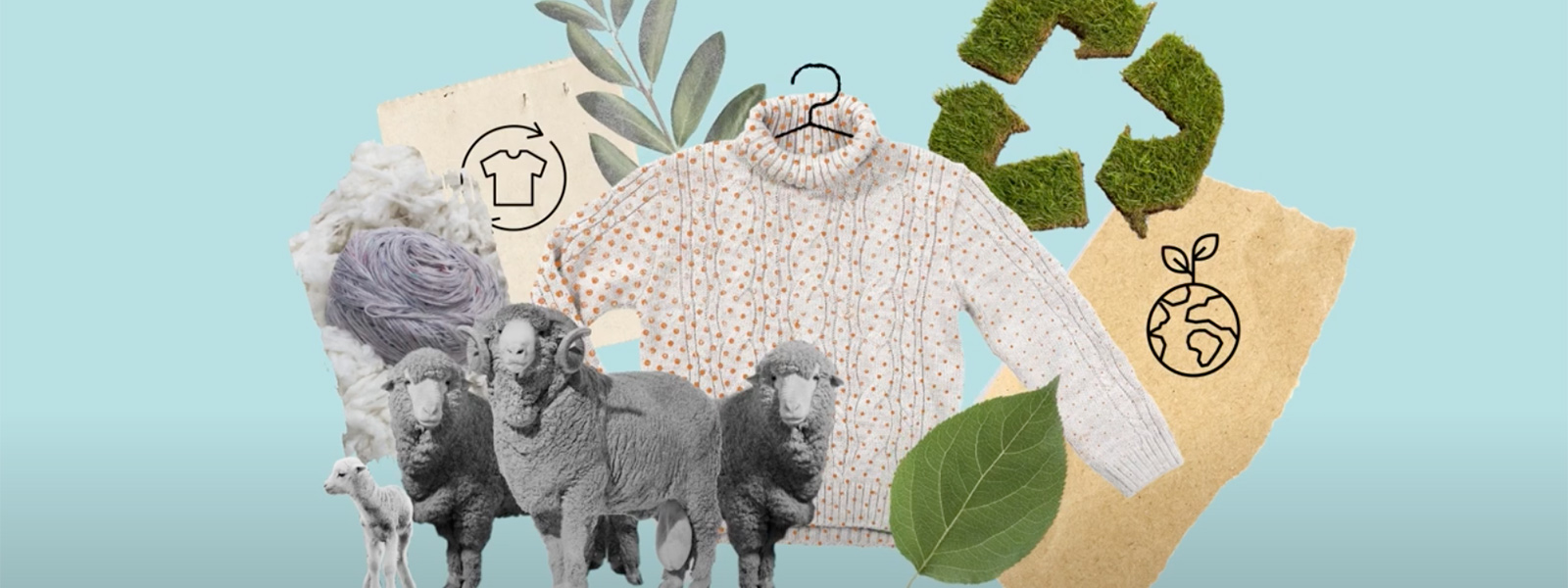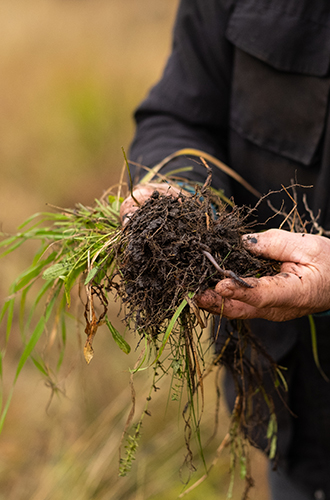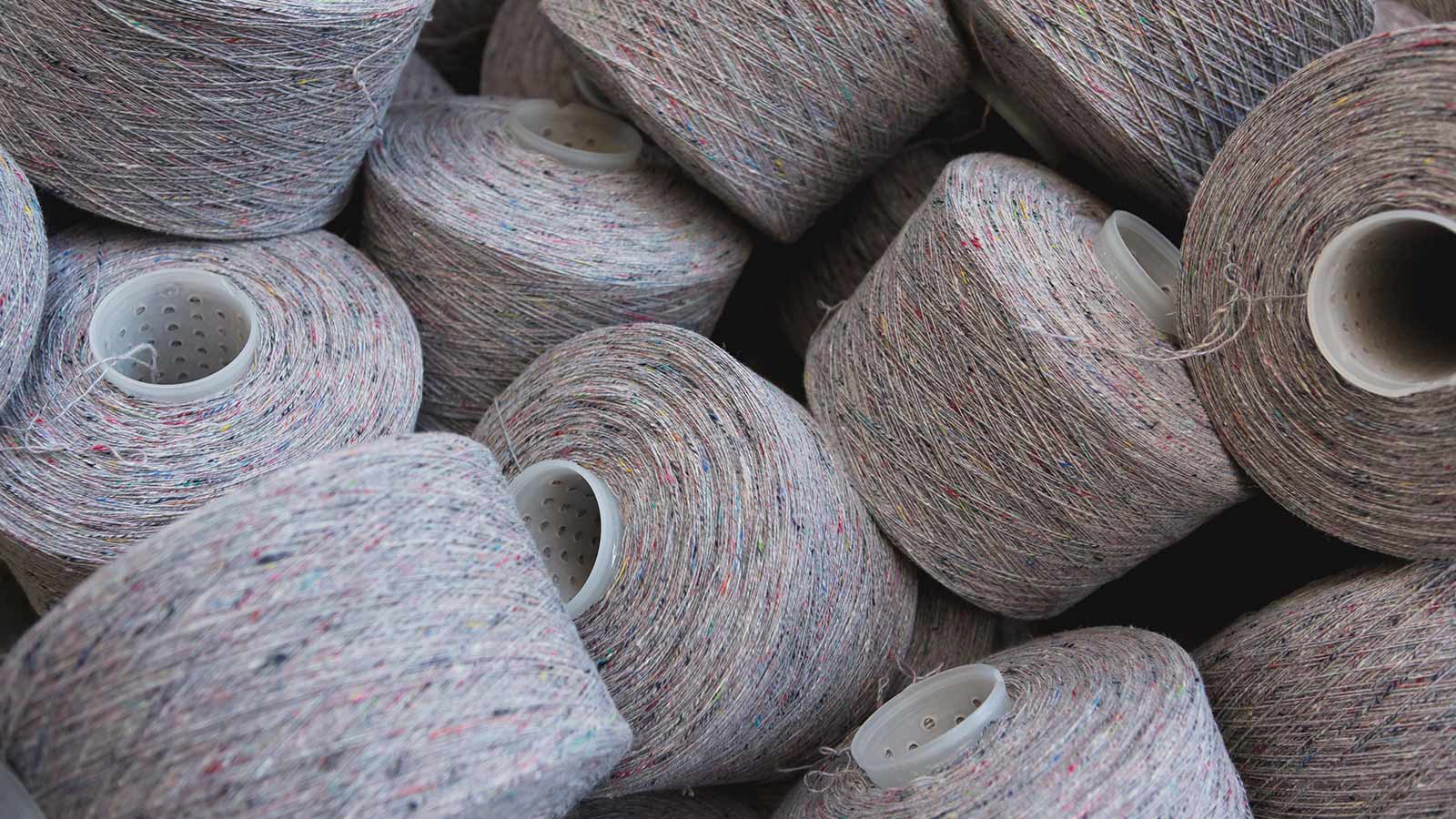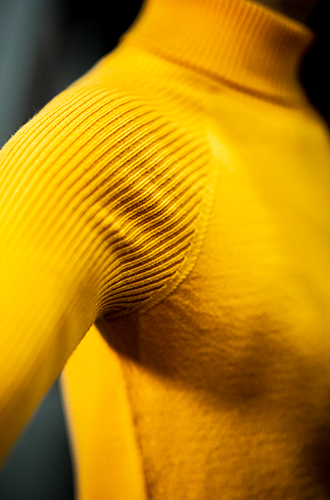Wool, by nature a circular fibre, can help brands enter more easily into the development of circular products.
Circular design in the textile industry uses regenerative materials, keeps garments in use and provides pathways for reuse, recycling and biodegradation at end-of-life. Discover how wool can be used within a circular textile economy.

WATCH NOW: This video explains why wool is an inherently circular fibre,
acting as a launchpad to help achieve circular design practices.

Sustainability
Toolkit
Gain essential wool knowledge, from the properties of the fibre to the social, animal and environmental impacts of wool, tailored for designers and brands.

Reduce Environmental Impacts Toolkit
Drawing on circular design principles, this toolkit provides step-by-step and science-backed solutions to reduce the environmental impact of wool garments.
Brands showcasing circularity with wool
Victoria Beckham
Victoria Beckham
Victoria Beckham used Woolmark licensee Tintoria di Quaregna’s natural dyeing process for the luxury label’s latest knitwear collection. Using flowers, leaves and berries, Victoria Beckham was able to achieve an earthy, warm colour palette whilst developing a collection with sustainability at its core. Garments also include a label for owners and future owners to write their name, encouraging the use phase of each product to be extended.
Uma Wang
Uma Wang
An increasing number of labels are end-to-end transparency, giving consumers access to track and trace the product from farm to garment. Leading Chinese fashion designer UMA WANG created a traceable, single origin Australian Merino wool capsule collection for AW2021/22. The 18-piece knitwear collection is ticketed with traceable QR codes - using blockchain technology - for consumers to trace and track the authenticity and provenance of the product.
NAGNATA
NAGNATA
Sustainability remains at the core of lifestyle label NAGNATA, whose knitwear range seamlessly takes you from the studio to street with ease. Knitted on circular machines machines, NAGNATA’s seamless garments not only reduce fabric wastage but also environmental impact - a key pillar of the circular economy.

Extending the use phase
Wool garments need less laundering, reducing energy and water consumption as well as maintaining the garment’s ‘as-new’ appearance. A wool sweater can be worn 14 times before washing. Increasing its number of wears to 400 across its entire lifespan can reduce the environmental impact of that garment by up to 68%.
To learn more about implementing circular design into your workflow, download our toolkit.

Inherently circular
Wool has been deemed circular since 1813, when Benjamin Law famously developed a process using recycled woollen rag combined with virgin wool to make a material called shoddy.
Wool’s natural circular attributes, innovations in manufacturing and established recycling industry enables designers and brands to meet these new legislative and policy initiatives with wool.
